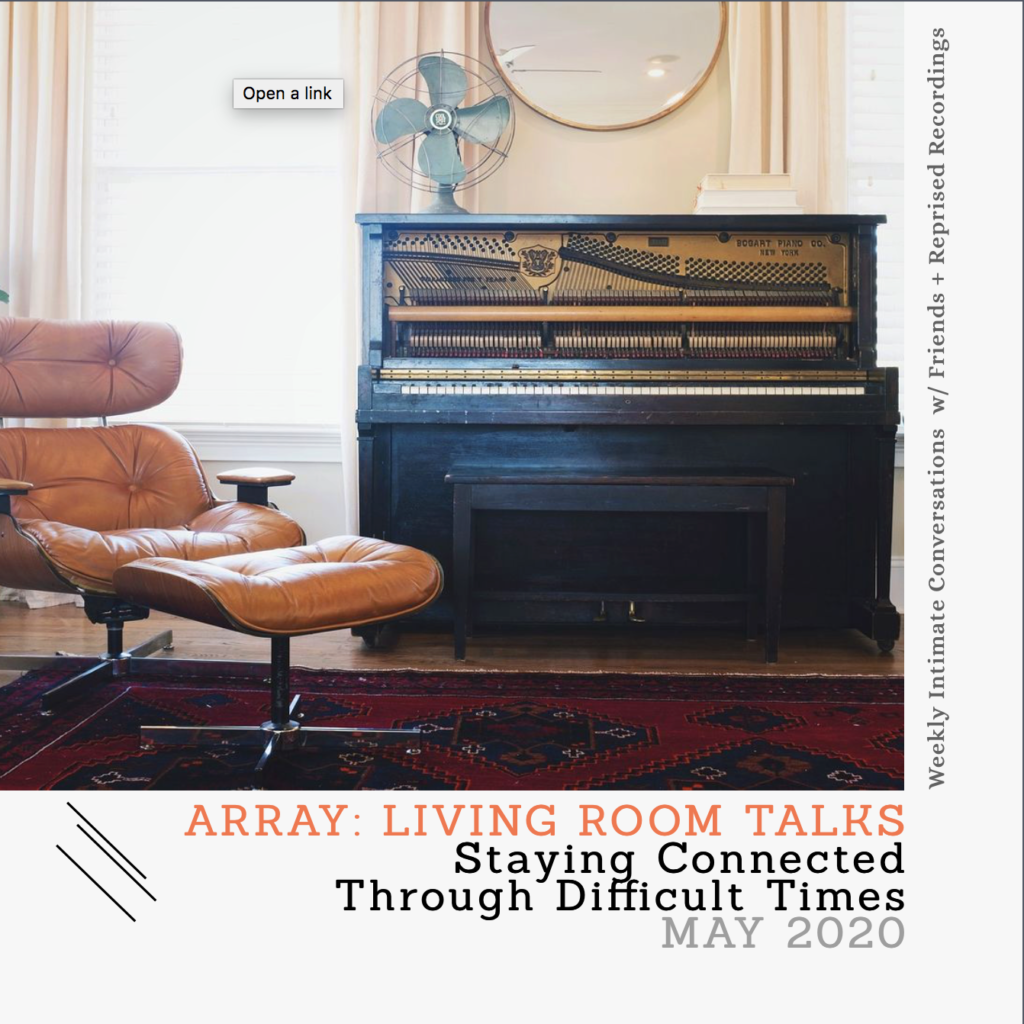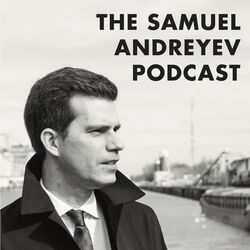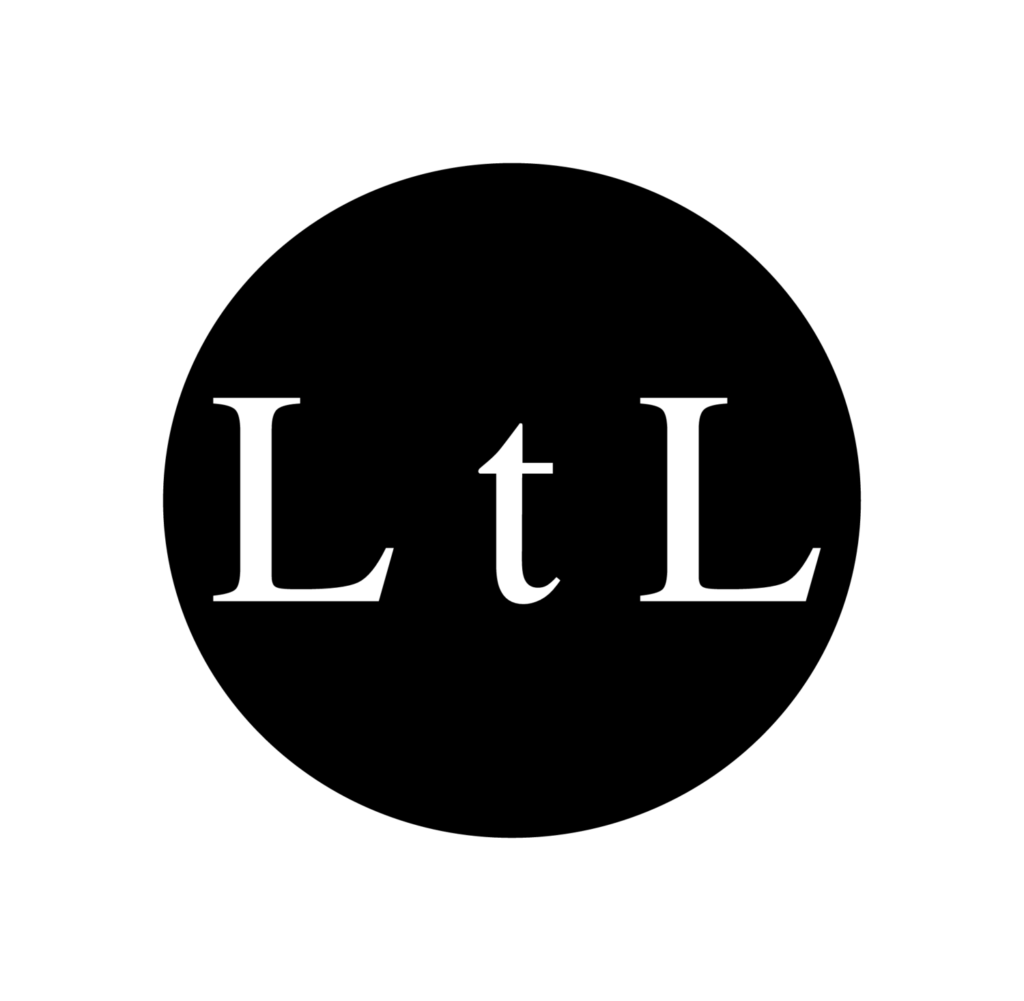“Höstman’s chosen color palette pulls all of the focus: it’s sparse with subtle color changes, like brushstrokes on a Rothko color field. Harbour as an album is deceptively quiet and contemplative. This is not a “background listening” album, but one perhaps best appreciated in a large, otherwise-silent room, or in the small hours of the morning. Ultimately, this Höstman-Duvall collaboration affirms what levels of expression quiet music is capable of when it is not forced to shout, but rather allowed to unfold on its own terms.” (Kathleen McGowan, I Care if You Listen
—

Array: Living Room Talks Link
—
“The lack of linearity in her writing is striking; she seems to delight in surprising listeners as the music twists and turns itself into big beautiful knots.” (Kevin Press, Exclaim)
—
“A celebration of “the special trust and reciprocity” existing between Canadian composer Anna Höstman and pianistCheryl Duvall, this quiet, jewel-like disc is a beguiling introduction to a distinctive voice. Höstman’s memories of childhood piano lessons led her to avoid writing for the instrument, initially struggling “to turn it into a compositional voice that’s different from just a reaction to your own memory of the instrument”, and there’s the constant sense here that she’s thought deeply about how the piano can best articulate her thoughts. Höstman’s music is succinct and lucid, all superfluities banished, the six works here reflecting her “ongoing interest in the reduced line”. The earliest work here, 2010’s darkness… pines is a sonorous sequence of unrepeated block chords, inspired by patterns in brickwork spotted during evening walks in Toronto. Höstman compares her music to continuous walking, “undirected though not aimless”.
harbour, the most substantial piece here, audibly reflects Höstman’s decision to compose it on a grand piano instead of her beloved upright, the bell-like sonorities deep and rich. And though it’s wonderfully sustained, you sense that she’s happier when painting on a smaller canvas. The shorter works are a perfect marriage of style and scale; pieces like yellow bird and the sublime adagio miracles of refined understatement. Duvall’s sensitive, nuanced playing is superb, the sense of intent never flagging.” (Graham Rickson, The Arts Desk, Leeds, U.K.)
—
“Fraai is ‘Yellow Bird’, vanwege wederom zo’n verstilde, licht speelse, bijna toevallige melodie. Schoonheid op een onverwacht moment. (transl. Beautiful is “Yellow Bird”, because of yet another quiet, slightly playful, almost accidental melody. Beauty at an unexpected moment.)” (Ben Taffijn, Nieuwe Noten)
—
Musiche del piano e musiche del tempo, (Ettore Garzia, Percorsi Musicale)
—

Samuel interviews Cheryl Duvall about Harbour. Link
—
“Her material is personal without being hermetic, intimate yet expansive. Consonance and dissonance go hand-in-hand, entwined harmoniously within the meticulously considered fabric of the compositional design. The six works on Harbour—the longest ones especially—play less like formally notated compositions than adventurous journeys methodically undertaken through natural landscapes (in the booklet’s liner notes, she describes her pieces as “a kind of continual walking” and “undirected, though not aimless”). Be forewarned: they’re not songs featuring simple melodies and repetitive structures; four push past the twelve-minute mark, with the title piece an epic twenty-six-minute exploration.
Routes are pursued that feel like free associations articulated by Duvall, at such moments the divide separating composer and performer blurred. If one word best describes her playing on the release, it’s lucid, the pianist demonstrating at every moment a clear, intuitive grasp of Höstman’s music. Duvall’s nuanced renderings are marked throughout by fluidity and sensitivity of touch.
Written after Höstman moved to Toronto (she returned to Canada’s West Coast in 2018), the album’s earliest work, the ponderous meditation darkness… pines… (2010), was inspired by evening walks where she regularly encountered a graveyard, enclosed by a brick wall, stretching for blocks on end. Birthed a year later, allemande is characteristically explorative, its development suggestive of the meandering nature of consciousness and its capacity for drift. At fifteen minutes, the piece affords ample opportunity for reflection, and Duvall uses the extended time to her advantage. Despite the physical fact of temporal advance, the music achieves a suspended, atemporal quality during its most floating passages.
At four minutes, late winter (2019) plays like a microcosm of Höstman’s universe, with Duvall surgically examining a motive from multiple angles. Many works, yellow bird (2019) among them, show the composer reflecting a minimalistic sensibility and preference for clarity in using spidery, single-note lines and resisting any impulse to overwhelm the listener with excessive density. Things turn entrancing for the album-closing adagio (2019), what with its repeating figures and gently lilting rhythms.
As would be expected, 2015’s harbour is the album’s central work, its oceanic expanse allowing it to span multitudes of dynamics and moods. Impressionistic cascades resonate alongside clusters of block chords and sparse single-line phrases collide with angular clusterings over the course of its run, Duvall an attentive midwife to the composer’s imaginings. The journey’s so far-reaching, the title begins to seem a misnomer, suggesting as it does a ship moored rather than one exploring freely far from shore. As Nick Storring writes in the release’s liner notes, Höstman’s music is marked by contradictions, its accommodation of both restraint and abandon a particularly salient feature. The composer herself identifies a clear parallel between the music she writes and her experiences growing up in the coastal wilderness: whereas nature can be quiet and still, it’s also abundant with life and energy. In an electronic context, these pieces would invite the label soundscapes; the word applies here too, even if the presentation is wholly acoustic. Höstman’s landscapes, it might also be said, play like maps of the mind distilled into sonic form. (Ron Schepper, Textura)
—

Listening to Ladies Podcast #3. Link
—
“Höstman’s music conveys an elated sense of being transported by sound. Although this set opens with an allemande and concludes with an adagio, her approach to formal design is manifestly intuitive, personal, and flexible, rather than imitative or bound to historical models.
Duvall nurtures the intrinsic suppleness and buoyancy of each of these six alluring pieces, their melodic trails that seem to wander yet never appear directionless, and yielding harmonies that suggest dappled light and ventilation, even amid the pensive shadows of darkness . . . pines or the austere clarity of late winter (for left hand only). This unforced yet compelling music, finding its own bearings while negotiating sonic swirls and eddies, brings to my mind Emily Dickinson’s wonderful notion of “rowing in Eden” without chart or compass. Höstman’s phrasing and cadences, her unhurried progress and sensitivity to rays of illumination seem— like Dickinson’s poetry— to be charged with quiet ecstasy, taking intense but gently articulated pleasure in their own fleeting existence within music’s unbounded and mutable flow.” (Julian Cowley, Musicworks)
—
“Höstman’s music demands a combination of intense mindfulness and extremely long-range thought. Not unlike her compatriot Martin Arnold, she is fascinated by musical lines – rather than encasing structures – that unfurl and loop and roll under their own volition. At points they seem to catch, on a motif or a chord, and at these moments the repetitions bring Feldman to mind. At other times, the music meanders quite carelessly, but somehow always doing enough to hold your attention.” (Tim Rutherford-Johnson, blog)
—
“…many of the pieces embrace single line constructions, delicately probing, developing, or floating in utterly naturalistic fashion, whether evoking the drift of a falling leaf or the jagged curves of a creek. Duvall’s touch is sublime, articulating melodic fragments that unspool, repeat (in a Morton Feldman-esque manner), dissolve, or tumble into dissonance with a meticulousness that underlines the fact that Höstman’s profoundly instinctive pieces are anything but random. The title piece, written in 2015, is the longest, most unstable work on the album. Its broad sweep presents a carefully charted assemblage of objects, moods, and events, with each transition sure-footedly articulated by the pianist.” (Peter Margasak, Best of Bandcamp Contemporary Classical)
—
“late winter (for the left hand) is intensely forlorn, a perfect match for the season.” (acloserlisten.com)
—
“Contemplative and gently flowing, but always with unexpected shifts and meanders — extremely thoughtful music…” (Brian Olewnick)
—
“Harbour is an album of sparse and pensively meandering solo piano. Pieces tend to fall in and out of sprightly sprigs of melody and distorted tempos that convey a deep longing…
Take, the first track, the eponymous Harbour (2015). This piece is particularly dynamic as it mixes dramatic overtones with stilted rhythms, and a dreamy whirlwind of scales over spins atop a grounding of overlapping resonances. Unique and beautiful in its own right, this music resides somewhere between “Suicide on an Airplane” and “Morning in the Woods” in its restive and melancholic melodicism, even if it is more pared down. Other tracks tread a similar line between hypnotic simplicity and slowly billowing loops on the one hand and jagged, brooding melodic cascades on the other.
In Harbour, Höstman and Duvall have produced an absolutely compelling album. It is patient and deliberate, eerily emotive. It is winsome, but dissonant….” (Nick Ostrum, freejazzblog.org)
—
“In this work for solo piano, composed 2010-2019, one hears the wistful curiosity of Satie, textures of Bill Evans, spacious landscapes of John Cage.
The mood is calm and introspective: Water sprinkles down a rockfall, single notes blossom like flowers, shifting color. Yet one senses disturbance, too. One harmonic resolution opens the door to yet another question. The darkness of Bartok. Perhaps a lament for an age of COVID. Altogether, this music, like good wine, leaves the listener wanting more.” (Only Strings)
.